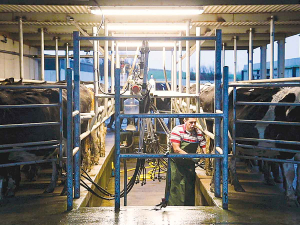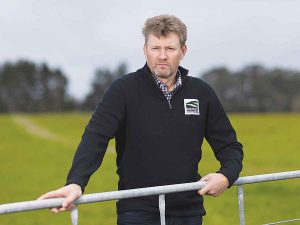1. Find the right people aged 30-45 to lead the dairy industry for the next 20 years. In my early farming years, the key names were Graham, Spring, McKenzie, Young, Storey, Calvert, Frampton, Fraser and Gibson -- all capably leading NZ dairy. The founding of Fonterra brought a complete changing of the guard. The old man of the team was John Roadley (age mid 50s) and the team of van der Heyden, Bayliss, Rattray, Gent and van der Poel were all early-mid 40s. Do not look to yesterday’s people to solve tomorrow’s issues.
2. Work hard to attract the best human talent we can to the industry. We can have the best milk, produced more efficiently than anywhere in the world and produced in a more environmentally and animal friendly manner. But all of our challenges will be solved not by cows, weather or milk, but by smart people. Dairying in NZ needs to attract top quality people to the industry to meet the inevitable challenges. Encourage good people into farming and direct poor people out of farming.
3. Associate with positive people. It is a very challenging period for dairy farmers socially. It is solely your choice whether you associate with people who see opportunities amidst the current industry challenges. Or it is your choice to be dragged down by people who cannot adapt to a changing dairy scene in NZ.
4. Ensure that you are a good ambassador for our dairy industry. Do not go to town to buy supplies with cow-muck on your arms or all over your clothes. Do not employ people on your farms who will not be good ambassadors for your farm. You can always teach good people new and good farming practice. It is difficult to change the character of people with poor life skills. Employing people who are really only looking for a job because a house comes with the job usually leads to disappointment.
5. Accept that synthetic, artificial and animal-free food will be part of the food scene. It will have its place. It will be the preference for some consumers. But it will not necessarily be better for the global atmosphere and climate or for water quality. Remember how margarine ate into butter’s market share for 30 years. Good science and a desire for natural foods have reversed this trend. If synthetic food were to get to 50% of world food demand over the next 30 years, there would still be excellent demand for the cleanest and greenest dairy product produced in the world via our NZ pastoral system.
6. Understand that NZ dairy farmers are not the sole reason for water quality issues or NZ’s greenhouse gas emissions, but we are part of the challenges. Ensuring we over-deliver on our parts of the solutions is a challenge we should take on with pride.
7. Embrace new technologies to be both more productive and more compliant as they become available. Do not hesitate to work with other smart young people to work out what is a ‘sales pitch’ and what is an ‘exciting opportunity’ in new ideas and products. Some change to climate in NZ will mean some farming practice will require adaption, but it will also open significant food production opportunities as well. From a food production perspective, a warming climate means subtle changes, not necessarily disaster.
8. Look back to old technologies which might not be fashionable but might really add value at very low cost and low risk. An example is the breed of dairy cow. NZ dairy has gravitated towards a Holstein Friesian / F cross national herd. A national herd reverting to 1/3 HF, 1/3 crossbred and 1/3 Jersey cows will significantly increase economic returns, increase cow life particularly related to increased cow fertility, and materially reduce emissions per kgMS (about 12% difference between the breeds) through a combination of more MS/kg feed, lower required replacement rate and lower carbon footprint from more concentrated milk impact on milk transport and milk drying.
There are not many positives about growing old, but seeing things go in cycles does look more explainable. A few years ago agri bankers were getting bonuses on how much they could shovel funds out of their vaults. Today, presumably they are remunerated for how much they can drag back in. In a year or two, good young farmers will have plenty of good banking options to fund new high yielding dairy growth options.
Giving is more satisfying than taking. The young and successful have a responsibility to take the skills, experiences and methods they have learnt from others, usually at no cost, and share them with the new entrants. This is what makes the NZ dairy industry special here at home and globally.
• Mark Townshend is a farmer who has dairy farming interests both in NZ and overseas. He is a former Fonterra board member.
















